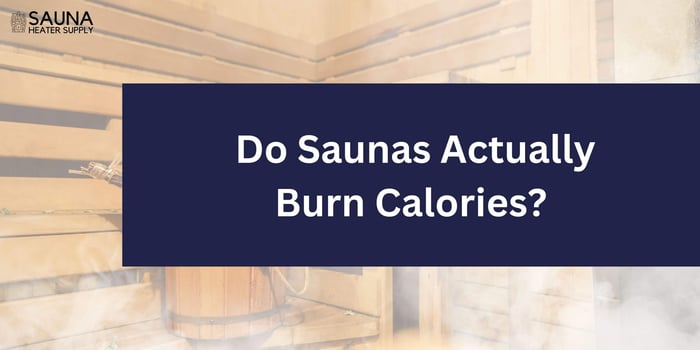When people come in to get sauna heaters, we often hear them say, “I can't wait to start my sauna sessions. I will lose so much weight." But how true is this? How many calories do you burn per session? Do you actually lose weight?
Indeed, the heat from the sauna elevates your heart and metabolic rates, similar to the effects experienced during a light cardiovascular workout.
While this calorie burn does occur, it is not in the way that many wrongly believe. This post breaks it all down, backing it up with science.
By the time you’re done reading, you’ll have a clear picture of how saunas affect your body, whether or not they help with weight loss, how many calories you actually burn, and the best type of sauna for you.
Table of Contents
- How Does a Sauna Work for Burning Calories?
- Sauna for Calorie Burn: Single Session vs. Regular Use
- Heat Exposure Duration and Intensity Factors Matter Too
- Factors That Determine Weight Loss With Sauna Heating
- Do Indoor vs. Outdoor Sauna Environments Matter for Calorie Burn?
- Other Legitimate Metabolic Benefits of Sauna
- The Bottom Line
- FAQs
How Does a Sauna Work for Burning Calories?
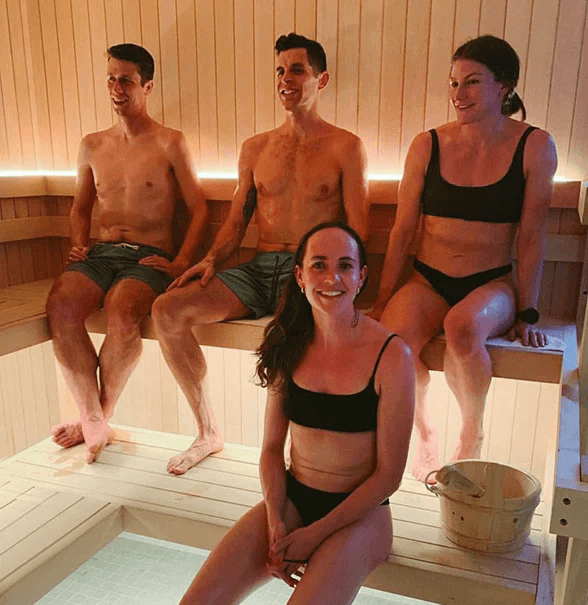
While you burn calories during sauna sessions, it is important to know just how much.
During a session, as your body gets hotter and hotter, you will start to sweat as your body tries to maintain its temperature. More oxygen-filled blood is circulated throughout the body, which increases your heart rate.
Your oxygen consumption will increase as energy in your body is expended as sweat. The more energy you expend, the more oxygen you will consume, which will, in turn, increase your heart rate.
As the heart rate increases, your body starts to burn off the calories.
For physical exercises like cardiovascular or aerobic exercises, the body burns up calories in fat and stored fuel like glucose.
However, while the body burns calories during sauna sessions, it is not as much as in physical exercises, and here's why:
While the heart rate increases, it doesn't increase as much as in physical exercise. Also, the energy expended is little because it doesn't involve the muscles.
The body then burns calories due to the increased heart rate but burns off water weight and electrolytes rather than body fat.
In an average 10 to 20 minute sauna session, you can burn up to 70 to 150 calories of water weight and electrolytes.
A 2019 study tracked participants who did four 10-minute sauna sessions in an hour (with breaks in between) and found that they burned an average of 73 calories during the first session and up to 134 calories by the last.
Meanwhile, we know that some people might still be curious about how they can leverage sauna sessions for weight loss or control. That’s why we created a separate guide on 5 ways to lose weight using a sauna.
Sauna for Calorie Burn: Single Session vs. Regular Use

When you compare a single session to regular sessions (about 3 to 5 sessions a week), there isn't much difference in how much body fat you lose. Over time, there will be a minimal decrease in water weight.
A single session will help you feel relaxed, reduce water weight, and burn some electrolytes.
Regular sessions, on the other hand, improve your cardiovascular system and reduce stress levels.
By the way, at Sauna Heater Supply, we stock a variety of Barrel saunas for various human capacities. This gives you an advantage over other types of saunas because the round shape helps with:
Shorter time to heat up
A more even spread of heat
Built-in seats with back support.
Heat Exposure Duration and Intensity Factors Matter Too
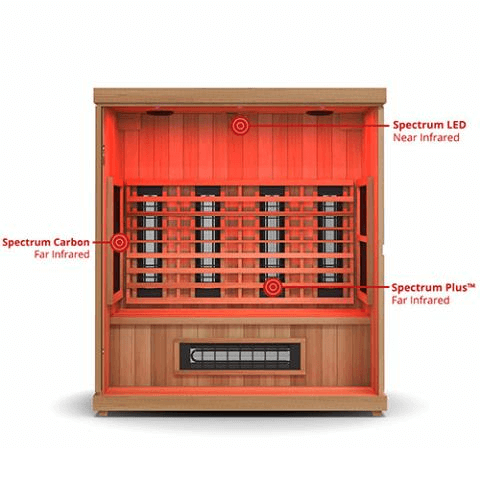
The type of sauna you use determines the intensity and heat exposure you get.
Traditional saunas
Traditional saunas are very common in Finnish households. They are heated using wood stoves or electric heaters and range in temperature between 70°C and 100°C.
They are great for high intensity and improve cardiovascular stimulation.
They have their temperatures monitored using a thermostat and timer for electric heaters.
There are high and low air vents, and the wood stoves' heating stones can be removed.
While traditional saunas are mostly dry heat, you can pour water on the sauna stones to create steam and humidity. You can also do this for an electric heater if it has both wet and dry operation functions.
Infrared saunas
Infrared saunas are the only type of sauna that doesn't heat the air.
Infrared radiation is emitted directly into the skin using electromagnetic waves from infrared panels or heaters, gradually increasing the body's temperature.
The sauna temperature ranges between 45°C and 60°C, so even though it is low, it still penetrates the skin deeply and makes you sweat profusely.
As the body temperature rises, the waves penetrate the skin, cleaning tissues and pores and relieving aches in joints and muscles. They also reduce inflammation and aid quick recovery.
NOTE:
Hydrate before and after a sauna session, and avoid heavy meals, caffeine, and alcohol.
After each session, cool down by showering, swimming, or staying in an airy or well-ventilated place. This will help you regulate your body temperature gently.
These tips will ensure that you are relaxed before, after, and during your sessions and engage in sauna bathing optimally and adequately.
Factors That Determine Weight Loss With Sauna Heating
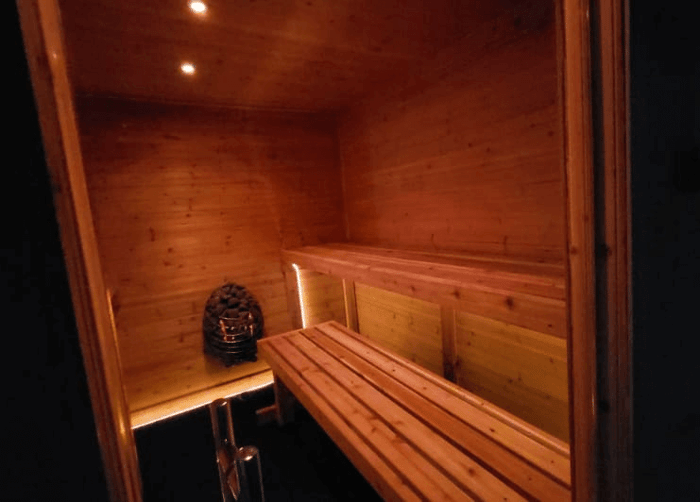
Different variation factors can affect how many calories you burn during sauna sessions:
Body composition
People with a larger body mass or surface area will burn more calories during sauna sessions than people with a lower body mass. Several studies have proven this.
This is because they retain more heat, increasing the heart rate and sweating, leading to burning calories.
Heavier people shed about 80 to 140 calories while lighter people shed about 60 to 100. This is a ballpark.
The session duration, the type of sauna used, and the frequency of the sessions affect the number of calories burned.
Fitness level
People who engage in physical fitness exercise burn more calories than those who don't.
Regular exercise improves their cardiovascular system, causing the heart to adapt more, gently increasing and maintaining their heart rate during a session, and making them sweat more.
Age
Older people's metabolic rates are lower, and their cardiovascular systems don't respond as quickly, so they lose fewer calories than younger individuals.
However, sauna sessions have more benefits. They help reduce tension, stiffness, and aches.
Do Indoor vs. Outdoor Sauna Environments Matter for Calorie Burn?
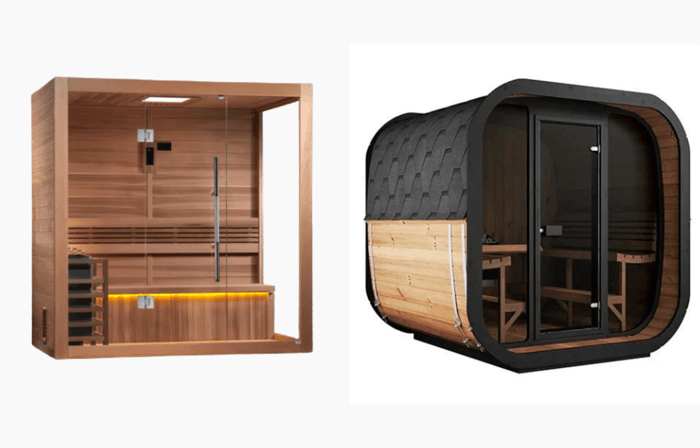
To put things in perspective, there’s really no “best” between indoor and outdoor saunas. They are very similar, with slight environmental differences between the two.
Indoor saunas are built and are a good option if you want privacy. They have vents to allow fresh air in and their lights.
Installing an indoor sauna is expensive because a heating and plumbing system must be installed.
On the other hand, an outdoor sauna has air vents that let in fresh air. During breaks, you can step out into nature, and while in the sauna, you can enjoy the serenity of nature.
However, outdoor saunas must be well-installed and of excellent quality to withstand the weather and weather conditions over time.
NOTE:
Temperature greatly affects outdoor saunas, with cold temperatures increasing the time it takes to heat up and hot temperatures making the sauna very hot during the summer.
If you prioritize convenience and privacy, indoor saunas are the sure bet. Outdoor saunas offer a more authentic experience, but be ready for the maintenance.
Other Legitimate Metabolic Benefits of Sauna
Aside from burning calories, sauna sessions have many benefits for the body. For example, they help regulate hormones relevant to metabolism.
Stress Reduction: An infrared sauna, for example, helps reduce cortisol, the stress hormone that improves health and aids quick recovery. Reduced cortisol leads to improved weight loss.
Improved sleep: It also helps the rest of the endocrine system function properly. This effect extends to sleep. As you relax, your body is detoxified and unstiffened, aiding not just sleep but also the quality of your sleep.
Helps with skin health: In the long run, it improves your exercise and accelerates recovery after strenuous exercise. It will also help you relax and improve the health of your skin.
At Sauna Heater Supply, we are the sauna heater experts. We sell sauna heaters and focus on providing you with the best products from top brands.
Our expertise ensures you get the perfect sauna heater, including 1-person to 8-person barrel saunas, and a smooth and enjoyable online shopping experience tailored to your needs.
The Bottom Line
Unlike workouts like running or cycling, there isn’t much solid research showing exactly how many calories you burn in a typical sauna session (no matter what those online calorie-burn calculators might claim).
A sauna probably won’t magically give you a snatched waist, but that doesn’t mean it’s not worth your time.
One of the biggest reasons people love it (and we don’t need a study to prove this) is that it is incredibly relaxing. We could all use a little more calm.
FAQs
1. Can saunas replace exercise for calorie burning?
While a sauna can help you burn calories, the type of calories it helps you burn are water weight, so they do not replace physical exercise.
2. How much weight can I lose from regular sauna use?
With regular sessions, the amount of weight you lose or calories you burn would be minimal, anywhere between 50 and 150 calories per session. Keep in mind that most of the calories would be water weight and electrolytes.
3. What's the optimal sauna temperature for metabolic effects?
Generally, different saunas have different temperatures. The best temperature should be determined by your needs. For example, if you are looking for an intense session, you should go for the traditional sauna, which has a temperature of 75°C to 105°C.

